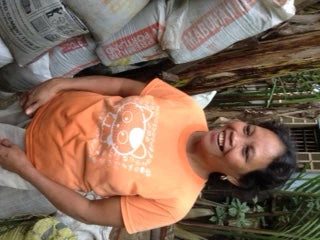
In the quiet village of Bantayanon in Negros Occidental, Ligaya Almunacid showed off her new toilet. “This is my dream toilet,” she told us. Hers is not the typical structure made of palm-thatched roof and walls commonly seen in the area, but rather made of concrete hollow blocks with galvanized iron roofing.
The 48-year old lady was all smiles throughout our conversation, telling us what she liked about the toilet. “I wanted my toilet to be durable especially since our house sits in the middle of a flood-prone area.” Ligaya recalled how difficult it was in the past when her family had to share their neighbor’s toilet, or take the risk of getting bitten by snakes in the field just to relieve themselves. On closer examination, it would seem that she made the right decision in building a hygienic and resilient structure in securing her family’s health and welfare.
Rural poor populations in many developing countries face the greatest barriers to gaining access to basic sanitation services. In the Philippines, where there are still 9.5 million people living in unsanitary environments, the government is struggling to offer a straightforward solution. Across the coastal town of Calatrava in Negros Occidental Province alone, the practice of open defecation is very rampant. In fact the town ranks second in the most number of households without toilets in the province, aggregately contributing to 67% of the entire region’s open defecator population. A study conducted under the World Bank Water and Sanitation Program’s Economics of Sanitation Initiative estimated that the country lost 1.5% of its GDP in 2005 due to the costs of poor sanitation. Indeed the government needs to think hard and urgently respond to address the issue.
While chatting with Ligaya, whose name literally means “joy” in the national language, I was puzzled by her optimism that poor families like hers who want to have a decent toilet could now afford to do so. The high cost of owning a latrine (which ranges from $330-550) is the main hurdle to the adoption of improved toilets by poor households. I discovered that Ligaya is a Pantawid Pamilya beneficiary, receiving a cash grant of about $36 per month. The Pantawid Pamilyang Pilipino Program is a conditional-cash transfer program that reaches more than 15 million poor people nationwide with cash grants, ranging from $25 to $36 per month. The daily fish catch of her husband and additional monthly earnings of $44 from babysitting are just enough to feed their family and meet other basic needs and to keep her three kids in school.
So how did she manage to afford her toilet? Ligaya has been making tiny savings through the Negros Women for Tomorrow Foundation, Inc. or NWTF, a micro-credit institution helping women achieve self-sufficiency in depressed communities, for some eight years now. Since joining the savings group, she has been attending weekly meetings with fellow mothers in the village. “It is better to keep your money in the bank, you tend to spend it for anything when you hide it in the house,” she answered when asked why she joined the group. She took a loan from their bank to purchase her latrine, where she pays around $4.50 weekly for a period of one year. It appears that access to savings and other financial services to the poor are working for the women’s group in this part of the country.
Addressing the problem of open defecation and unhygienic toilets involves changing the attitudes and behaviors of rural communities practicing poor sanitation. It also entails changing the mindset of local health authorities and government officials, where supply-driven programs in the past have failed to effectively make a dent. Creating and meeting demand for sanitation requires a complex but systematic approach that uses behavior change communication to generate consumer awareness and desire for toilets. Sanitation enterprises also need to be more innovative, developing products that are desirable and affordable, among poor households. The new generation sanitation campaign of the government – “Unli Asenso pag may Inidoro” (There is unlimited progress when one has a hygienic toilet) brings a spark of hope. Interestingly it positions toilets as an expression of safety, pride, convenience and a promise of progress.
As I find my way out of the village through a muddy trail, my mind is racing, picturing the rest of our poor countrymen living in unsanitary conditions. What would take them out of such predicament? What solutions can government and communities adopt to scale up rural sanitation? When will our country achieve universal access in sanitation? Until we smell, see and touch the world of Ligaya, I guess these questions will remain a mystery for many of us.


Join the Conversation